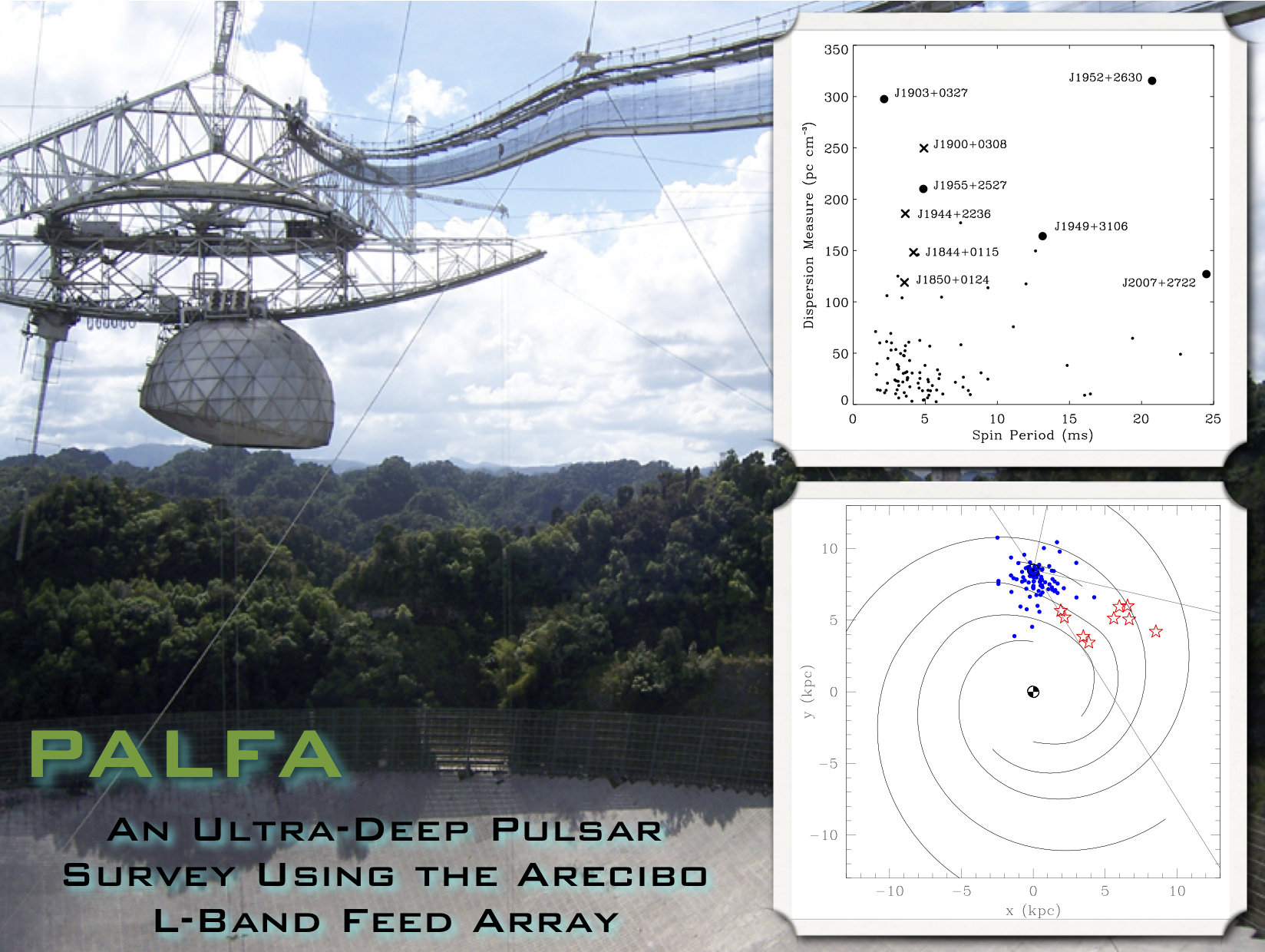Daily Image
18-09-2012Going the Extra Mile to Find Distant Millisecond Pulsars
| Submitter: | Jason Hessels and Froney Crawford |
| Description: | Constructed nearly a half century ago, Arecibo remains the largest single-dish radio telescope on Earth. Since 2005, we have been using the 'ALFA' 7-beam receiver to perform 'PALFA' - the deepest pulsar survey ever undertaken in the Galactic Plane. One of PALFA's greatest strengths is its sensitivity to distant millisecond pulsars. These sources have been previously beyond our reach because of their weakness and the deleterious effects of the interstellar medium. By recording high time and frequency data at 1.4GHz, we can largely compensate for dispersive smearing from the interstellar medium and probe many kiloparsecs into the Galaxy. Recently the PALFA team (including ASTRON astronomers Hessels and van Leeuwen) published the discovery of 4 distant and highly dispersed millisecond pulsars (Crawford et al. 2012). These newly found pulsars are marked with crosses in the top figure, which shows that there are very few millisecond pulsars with such high dispersion measures (the 5 large circles also denote PALFA discoveries). When one views the PALFA millisecond pulsar discoveries (red stars in bottom figure) projected onto a top-down view of the Galactic Plane, it is clear that they are also significantly more distant than the bulk of the known population (blue dots). By probing so deep into the Galactic Plane, PALFA is giving us a taste of what will be possible with an SKA pulsar survey, which has the potential to discover the majority of the millisecond pulsars in our Galaxy. In other words these PALFA discoveries are important for accurately modeling how many millisecond pulsars there are to find in the Milky Way. |
| Copyright: | Crawford/Hessels |
| Tweet |  |
